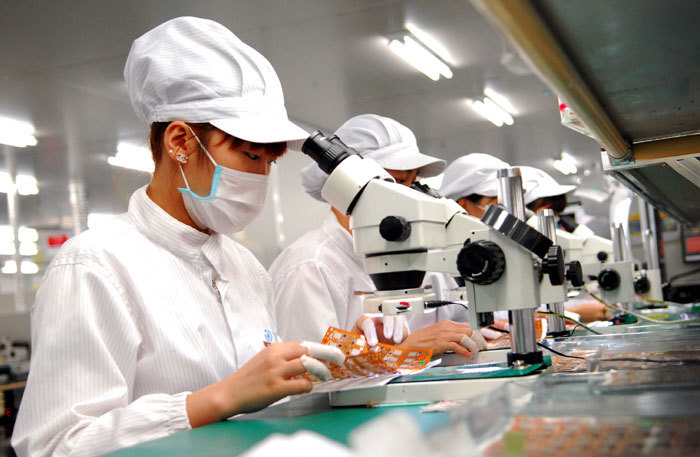Vietnam's 2016-2020 socio-economic development plan has gained impressive achievements despite difficulties.

According to Dang Duc Anh, deputy director of NCIF, Vietnam’s GDP recovered clearly after the 2011-2015 period. The GDP growth rates were especially high in 2017-2019 – 6.81 percent in 2017, 7.08 percent in 2018 and 7.1 percent (estimated) in 2019. The figures are described as ‘very encouraging’ in the context of the global growth slowdown.
However, Anh noted that the growth model in 2016-2020 does not show clear changes. The growth mostly relies on investment capital with the ratio of investment capital to GDP at a high 33.5 percent level. The contribution of investment capital to growth still accounts for a large proportion (over 55 percent).
| The economic structure has shifted too quickly into the service sector while the industrial base remains weak, supporting industries have developed slowly and enterprises mostly still do outsourcing. |
The economic structure has shifted too quickly into the service sector while the industrial base remains weak, supporting industries have developed slowly and enterprises mostly still do outsourcing.
The services with high added value still make modest contributions to growth, and logistics costs are still high. Exports still depend on foreign invested enterprises. Domestic enterprises, especially small and medium enterprises, have not participated much in the global value chain.
All these factors are shortcomings of Vietnam’s economy.
Commenting about Vietnam’s economy in 2019, Thang said while 2019 has not been a good year for the global economy, Vietnam has prospered. Tbe great efforts in improving the business environment have been cited as a reason behind the good economic performance.
The Vietnam Institute for Economic and Policy Research (VEPR) is optimistic about the economy in 2019. Following the 7.31 percent growth rate obtained in the third quarter, VEPR predicts 7.26 percent growth rate in the fourth quarter and 7.05 percent growth rate for 2019.
The figure, if gained, is much higher than the targeted growth rate of 6.6-6.8 percent set by the National Assembly.
However, economists warn that Vietnam may have to face new risks in 2020 when the world’s conditions change.
The shift of the global value chain when the trade war cools down will change Vietnam's import structure. Thang said in 2020-2022, Vietnam may face negative impacts from the trade war.
Regarding FTAs, Thang believes Vietnam should not put high expectations on tariff cuts. FTAs, however, can create a good investment environment and institutional regime. As for EVFTA, this will ‘give a push’ to the economy.
Thanh Mai

Vietnam’s economy stays positive amid global growth slowdown: PM
Vietnam’s economy remains positive despite the slowdown in global economic growth, especially in Asia, over the last 11 months, Prime Minister Nguyen Xuan Phuc said while chairing the Government’s regular meeting for November on December 2.

Cash habit, poor infrastructure prevent to non-cash economy in Vietnam
While non-cash payments are admittedly on the rise, the cash payment habit and limited development of technology infrastructure are big problems for the country’s non-cash economy, experts have said.
 “We think that in 2020-2022, Vietnam may face negative impact from the trade war instead of short-term positive impact, ” said Tran Toan Thang from the Centre for Socio-Economic Information and Forecast (NCIF).
“We think that in 2020-2022, Vietnam may face negative impact from the trade war instead of short-term positive impact, ” said Tran Toan Thang from the Centre for Socio-Economic Information and Forecast (NCIF).